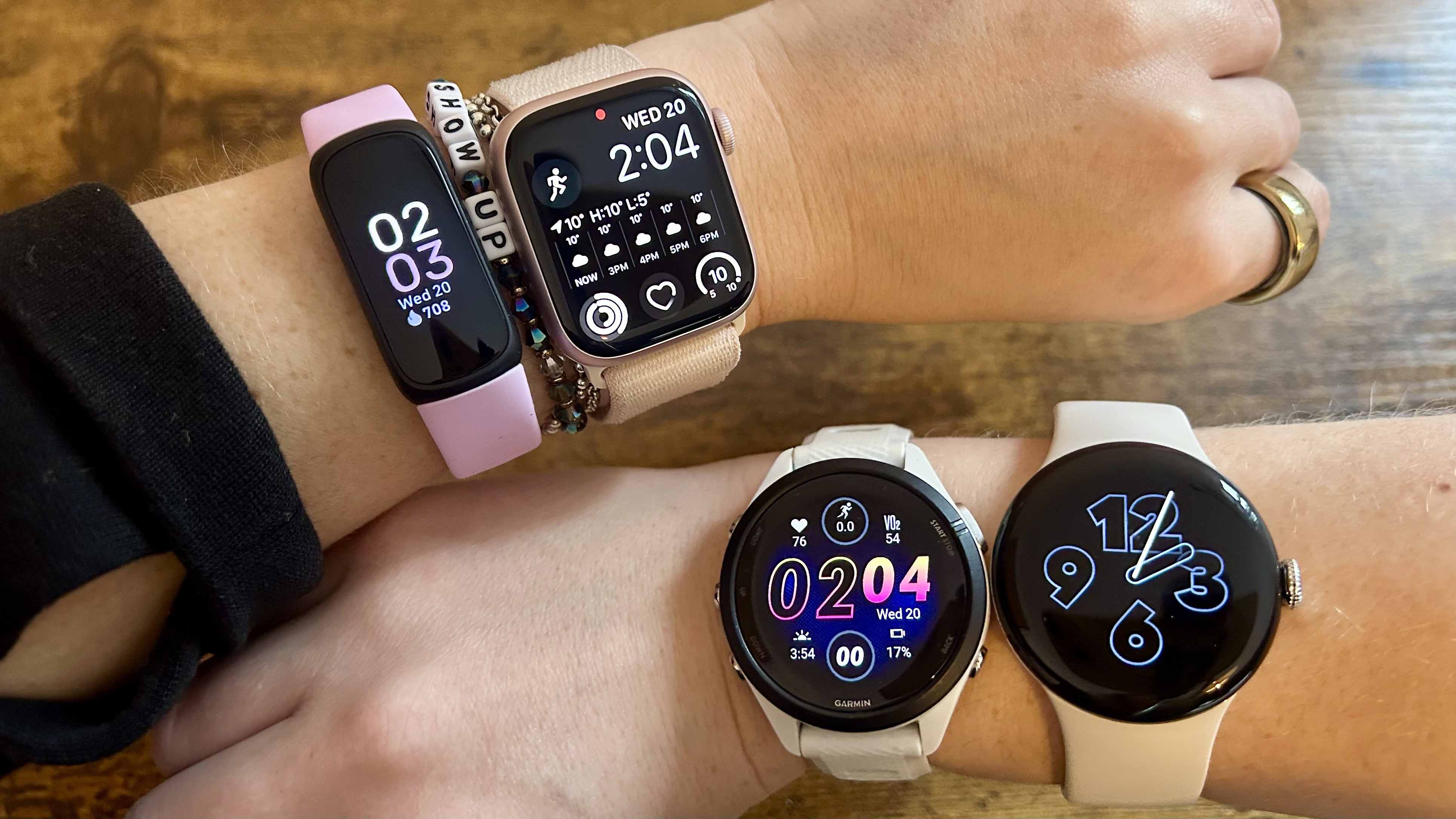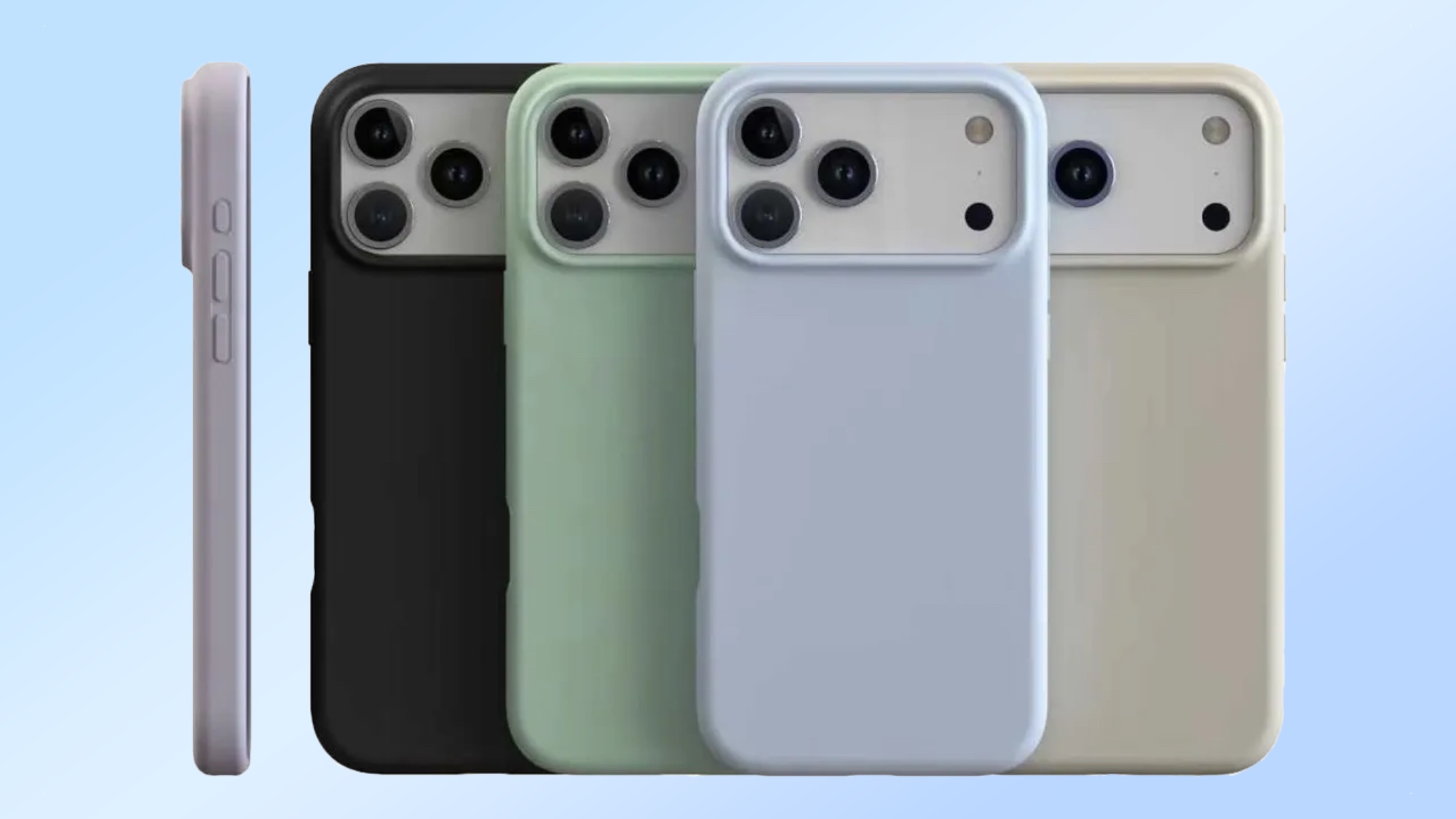I walked 5,000 steps with the Apple Watch 9, Google Pixel Watch 2, Fitbit Inspire 3, and Garmin Forerunner 265 — here's the winner
Here’s which fitness tracker came out on top

If you’re looking to invest in one of the best fitness trackers to reach your fitness goals, you might be wondering which one to choose. As a fitness editor, I’m lucky enough to test some of the best tech on the market, to help you work out which is best for you.
But if you’ve been wondering which watch is most accurate, I’m here to help. I strapped four of the most popular trackers to my wrist and manually counted my steps to see how each watch compared.
I wore the Apple Watch Series 9 and Fitbit Inspire 3 on one wrist, and the Google Pixel Watch 2 and Garmin Forerunner 265 on the other. Read on to find out what happened.
I walked 5,000 steps with the Apple Watch 9, Google Pixel 2, Fitbit Inspire 3, and Garmin Forerunner 265 — here’s what happened
Fans of the Tom’s Guide fitness page will know this isn’t my first fitness challenge like this — I can often be found wearing two watches, and walking with my trusty $7.99 tally counter tool from Amazon. The tool is designed to remove the human error of manually counting my steps — I simply click each time I take a step, then when I get home, I download the data from all of the watches to compare.
All of the watches on test count your steps using an internal accelerometer, which measures the swing of your arm. Each swing counts for two steps. It doesn’t matter whether you wear your watch on your dominant or non-dominant hand, or whether you’re walking with your hands in your pockets, or holding something, the accelerometer should still measure your body’s movement.
I’ll start by pointing out that each of these trackers is pretty different, and it’s unlikely you’d be deciding between all four. For example, the Apple Watch Series 9 and the Google Pixel Watch 2 made it onto our list of the best smartwatches.
Which you pick largely depends on which smartphone you use — the Apple Watch won’t connect to Android phones, and the Pixel Watch 2 won’t work with your iPhone. The Apple Watch 9 costs $399 and has Apple’s new S9 Processor, allowing you to use the new double-tap gesture. The Google Pixel Watch 2 costs $349 for the Wi-Fi model and $399 for the LTE model.
Sign up to get the BEST of Tom's Guide direct to your inbox.
Get instant access to breaking news, the hottest reviews, great deals and helpful tips.
Both the Google Pixel Watch 2 and the Fitbit Inspire 3 use the Fitbit app to track your steps, calories and sleep. For both, you’ll need to pay for a Fitbit Premium membership. You get 6 months free when you register your new device, but after that, you’ll have to pay $9.99 per month, or $80 a year. That said, the Fitbit Inspire 3 is far more affordable, costing $99. It is one of the best Fitbits available — you’re getting an awful lot for your money, and it has a beautiful, bright screen. Just don't expect built-in GPS at this price.
Finally, the Garmin Forerunner 265 is one of the best running watches on the market, costing $449. It has a beautiful, bright AMOLED screen, and is packed with some of Garmin’s advanced training features.
But which watch was most accurate? Here’s the difference in the data between all four watches:
| Row 0 - Cell 0 | Steps | Distance | Pace |
| Manual recording | 5,020 steps | N/a | N/a |
| Apple Watch 9 | 4,934 steps | 2.45 miles | 16:01 minute/mile |
| Google Pixel Watch 2 | 5,018 steps | 2.5 miles | 15:55 minute/mile |
| Fitbit Inspire 3 | 4,844 steps | 1.98 miles | 19:58 minute/mile |
| Garmin Forerunner 265 | 5,018 steps | 2.42 miles | 16:26 minute/mile |
The first thing that stands out to me is the difference between the distance tracked between the four watches — while the Apple, Google, and Garmin devices are all similar, the Fitbit Inspire 3 was half a mile shorter, although this can probably be explained by the lack of built-in GPS.
However, when it comes to accuracy, the Garmin Forerunner 265 and Google Pixel Watch 2 were pretty much spot on, only missing two steps on my walk. Next up was the Apple Watch Series 9, which only missed 86 steps, then the Fitbit Inspire 3, which missed 176 steps.
Of course, no fitness tracker will be 100% accurate at counting every single step — I’m five foot two and have quite a short stride. When I’m running, I often find I have a high cadence because of this. What’s more, fitness trackers do a lot more than just tracking your steps, and counting steps alone isn’t the best metric when it comes to getting fitter and losing weight. That said, it’s a good place to start.
10,000 steps is the equivalent of walking around 5 miles per day, which might sound like a lot, but might mean taking the stairs, not the elevator, getting off the subway a couple of stops early, or meeting a friend for a walk at lunch, not sitting in a coffee shop. There are several benefits of walking more, including losing weight, building muscle, and feeling less stressed. Here’s what 30-minutes of walking each day can do for your body.
More from Tom's Guide

Jane McGuire is Tom's Guide's Fitness editor, which means she looks after everything fitness related - from running gear to yoga mats. An avid runner, Jane has tested and reviewed fitness products for the past five years, so knows what to look for when finding a good running watch or a pair of shorts with pockets big enough for your smartphone. When she's not pounding the pavements, you'll find Jane striding round the Surrey Hills, taking far too many photos of her puppy.
-
Eggs_n_Bacon I found it interesting that the two watches which had the lower step count were on one arm, while the two that had the identical step counts were on the other. I wonder if that affected them. Also, many of the higher end trackers and/or smart watches use algorithms in the background, which draw inputs from the onboard sensors, like the accelerometers you mentioned in your article; it’s not just as simple as tracking a swing of the arm. For example, if you are mowing, or carrying a coffee in your hand with the watch on it, you would capture no steps due to an arm swinging…and yet, if you look at these watches/trackers, they will track steps. What’s more, they will improve and become more accurate with time as the system takes more data and minimizes the errors that may be seen earlier on.Reply
Just throwing this out there because there are a lot of variables to your test that could have affected the readings from the watches, and you only did a single test. That’s not enough to create any statistical relevance, but beyond that, it’s not enough to create a trustworthy comparison and/or recommendation. I’d really love to see information over a week or two for the watches, maybe varying which arm you wear them on, and in which position, each time. That would generate some truly interesting data and a great comparison! -
Arghness I don't think you actually need to pay for Fitbit Premium to track your activities and steps. I've had a Pixel Watch 1 for over a year and it's still tracking all my activities and steps. I've never paid and am not a premium subscriber. Premium just adds some more features (workout videos etc) - I think Apple has a similar thing with a premium version, which you didn't mention?Reply
